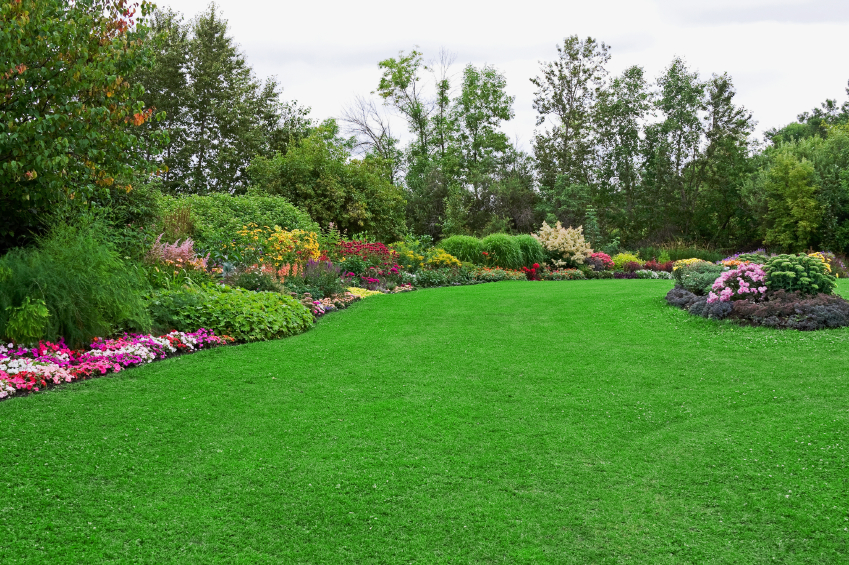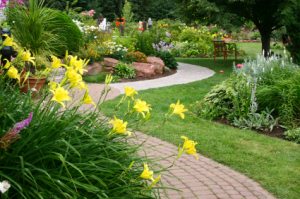
Using Ornamental Grasses In Illinois Prairie Style Garden Designs
Prairie’ or ‘New European’ styles of gardening are amongst the most exciting developments of landscape design in the Naperville, Plainfield and Bolingbrook area and very much in vogue. Easy to grow low maintenance prairie grasses and plants are among natures most spectacular creations, producing drifts of waist-high fronds stippled with blooms of brilliant yellow, flaming crimson and soft lavender.
Because of their extensive sophisticated root systems, prairie plants and grasses can be the answer to those problem spots in the garden, particularly where the soil is shallow poor or dry. Once established, they require little attention and don’t need mowing like most lawns so a landscape design that include these grasses requires a lot less lawn maintenance.
Grasses offer an amazing and diverse range shape colour and seed head to choose from recommended varieties are Miscanthus sinensis ‘Morning Light, Miscanthus sinensis ”Zebrinus’, Molinia caerula ‘Karl Foerster’, Stipa gigantea and Stipa tenuissima. Prairie grasses and plants need little except for full sunlight, prairie grasses and plants adapt to most conditions and can be grow in a diversity of soil, from clay to sand, and are tolerant a wide range of soil fertility and acidity. Prairie plants also grow in dry shallow soils or marshy soils that most plants cannot tolerate.
When planning your Illinois Prairie Garden take time to consider a few points before ordering plants. look at the Grasses Page and read the description and decide which plants , Match plants to your soil; dry, mesic or wet. Fit the size of the plants to the size of your garden. Unless it is to be a focal point keep tall plants to the edges. Sketch out roughly the garden shape and fill in the different areas on the sketch with different autumn colors and add splashes or dots of vibrant herbaceous colors and consider whether you will, Plant in curves, instead of rows, it will give you a more natural look. Allow one species to dominate, then blend into another. Try for continuous color throughout the growing season. In a large prairie garden, you may want to make paths to walk along. Turn your prairie garden into a wildlife oasis by adding plants that are attractive to butterflies, birds and other wildlife.
Although the prospect of a low maintenance trouble free prairie garden is attractive the biggest challenge of prairie gardening you will face, if you are growing from seed, is controlling weeds during the first two or three years. Prairie plants spend the first years of their life developing their complex and evolved roots system while common ground weeds put all their energy into producing into above ground growth, crowding out young prairie seedlings and denying them the light they most need. That’s why I would recommended you use plant good strong pot or nursery grown plants or mature divisions from a good supplier such as the Pot & Grass Company as quicker less labor intensive solution.
Irrespective of whether you intend to use seeds or plants the area in your landscaping design must be completely free of weeds and grasses. Heavy clay soils should be cultivated or dug to a depth of 30 cm. (12 inches) to break up layers of compacted soil. Organic matter such as compost, peat moss, well rotted manure or leafmold and sharp sand can be worked into poorer clay soils to improve aeration and water infiltration. Very dry sandy soils in particular will be improved by the addition of organic matter to increase their nutrient and water holding properties. Lawn mowing and raking every spring also helps control weeds and promote growth. You should mow in late June with the mower blade set about 200 mm. (8 inches high).
The growing tips of grasses is just above the ground and they grow from the bottom up unlike other garden plants that have their growing tip at the top. This will cut back early growing annual weeds, but not affect slower-growing prairie grass and plants. Prairie gardens require no covering, no pruning, no spraying, no irrigating and little, if any, fertilizing saving prairie gardeners loads of dosh and hours of hard work. By the third year, there is little for the prairie gardener to do but open a cold one, sit in the middle and enjoy it!
Peter Corbett. Is a collector of rare grasses and ornamental bamboos and written several articles on the subject. Peter advices and assists his wife Heather who runs the Pot and Grass Company Nursery and mail order company specializing in bamboos and grasses. Peter has a keen interest in Chinese metaphysics and has lived and traveled extensively through SE Asia and mainland China. Peter has written a book on Feng Shui “Qi Concepts for energy engineering” which is available for purchase from the Pot and Grass company online store or available as a free down load to customers.
Article Source: http://EzineArticles.com/?expert=Peter_Corbett

